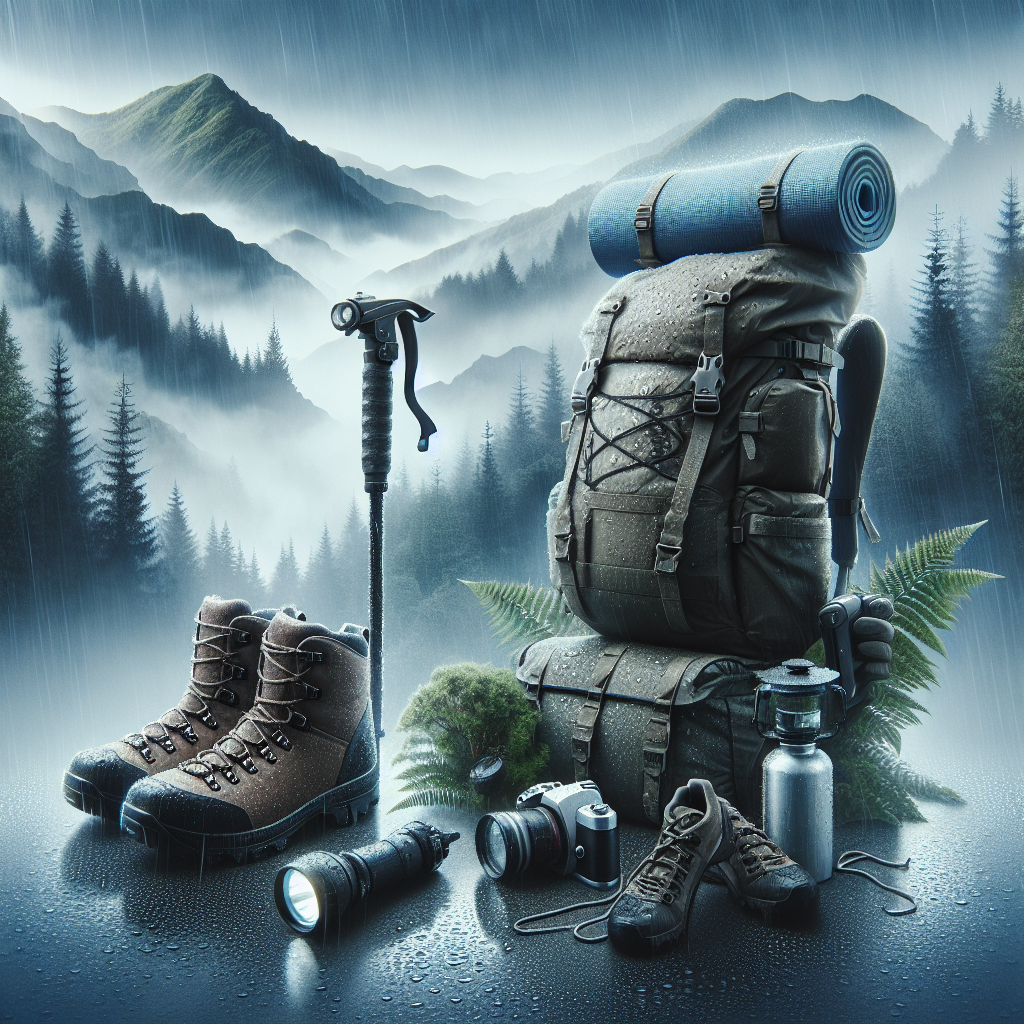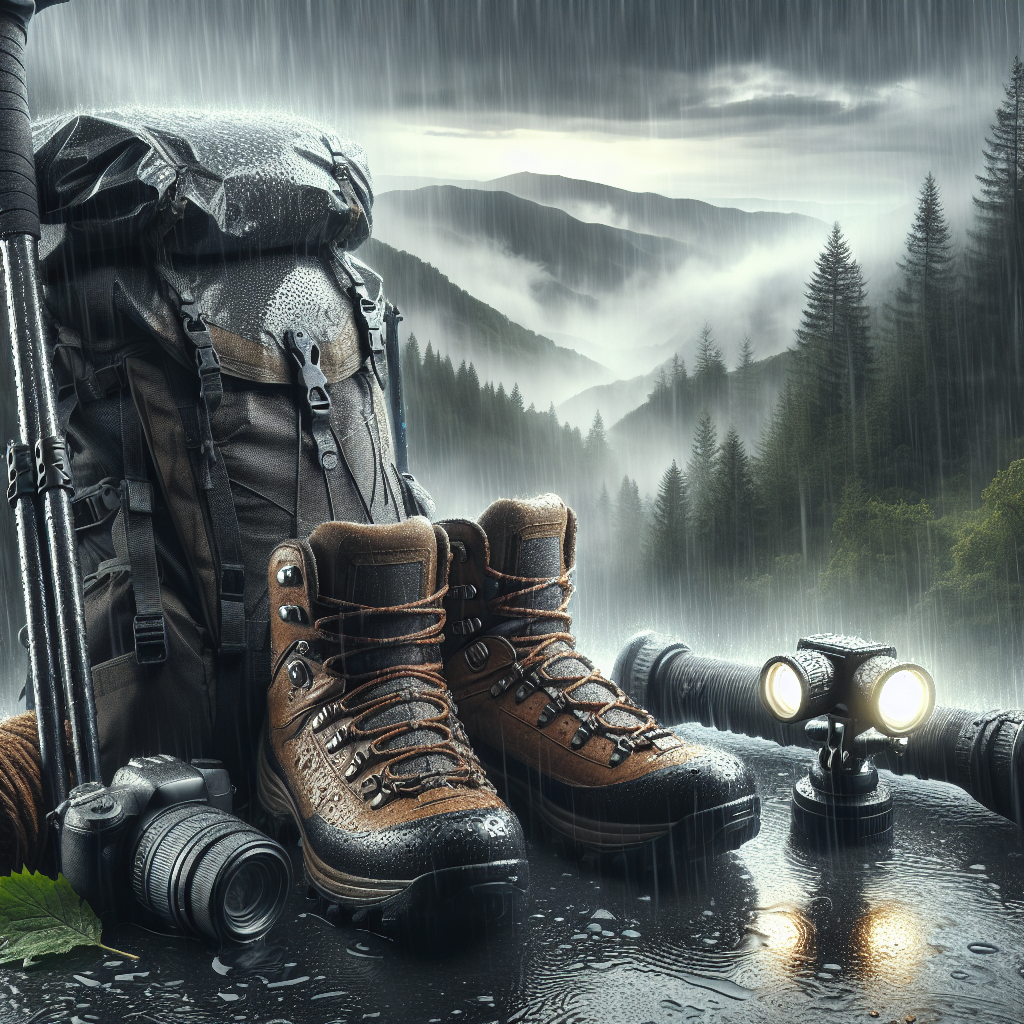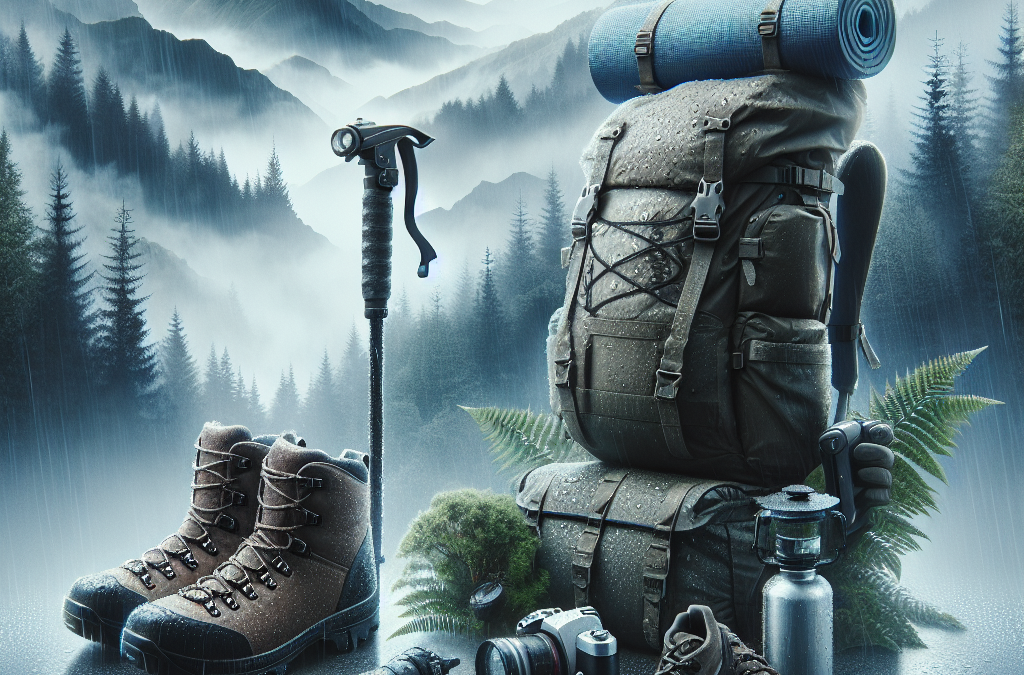Imagine lacing up your sturdy boots, shouldering your waterproof gear, and bracing yourself for an invigorating hike in the gentle drizzle of the rain. Your adventure is about to be transformed, as “Hiking In The Rain: Gear And Techniques,” sets the stage for a thrilling journey through the magic of a rain-soaked wilderness. From the right equipment to proper methods, you’ll discover the joy of embracing the elements instead of avoiding them. So, get ready to turn those grey skies into a whole new world of discovery and excitement.

Benefits of Hiking in the Rain
Hiking in the rain might sound counterintuitive, but it offers a host of unique benefits. No experience matches the raw immersion of nature you get when you hike in the rain.
Greater solitude on trails
Rainy weather offers you a great opportunity to enjoy solitude on the trails. Most people tend to avoid hiking during rain, which means you’ll encounter fewer people, enhancing your oneness with nature.
Different wildlife spotting
Hiking in the rain increases your chances of seeing different types of wildlife, especially amphibious animals. The rain can bring to light critters who normally hide out during drier spells.
Refreshing environment
Just after the rain, there’s a remarkable freshness in the air that simply can’t be experienced in dry weather. The intoxicating smell of damp soil, the symmetry of raindrops on leaves, and the dramatic play of clouds—it’s an experience that stirs the soul.
Improved mental resilience
Rainy weather can pose physical challenges and mental trials, giving you an opportunity to improve your mental resilience. Successfully hiking in the rain can give you the confidence to face more arduous trails.
Preparing for Hike in Rain
Hiking in the rain calls for a different kind of preparation. From choosing the right trail to safety measures, every detail is important.
Checking weather reports
Before a rainy hike, always check the weather reports. Knowing what to anticipate can prepare you for the conditions ahead and ensure your safety.
Choosing the right trail
Opt for trails that drain well and are less likely to be slippery. Look for well-marked trails to avoid getting lost in low visibility conditions.
Planning your course
When planning your course, factor in elements like water crossings. Streams and rivers can swell quickly in rain and may become impassable.
Safety measures and emergency plans
Rain means increased risks, so you must have safety measures in place. Carry a first-aid kit and know the locations of the nearest emergency aid stations.
Time consideration
Rain can slow you down. Plan accordingly and be prepared to hike less distance than you usually would in dry conditions.
Essential Rain Gear
Equipping yourself with the right rain gear is the key to a successful rainy hike.
Waterproof footwear
Waterproof boots or shoes protect your feet from getting soaked, keeping them dry and comfortable.
Rain Jackets and Pants
These are your first defense against the rain. Choose breathable ones to avoid sweating inside.
Non-cotton clothing
Cotton holds onto water and takes longer to dry. Instead, opt for wool or synthetic fibers that dry quickly.
Waterproof backpack
Helps to keep your gear, food, and clothing dry. Rain covers are also a handy accessory.
Gaiters
Gaiters offer extra waterproofing for your lower legs and boots.
Waterproof map and compass
In rainy conditions when electronics can fail, you need a waterproof map and compass.
Layering Principles for Rainy Hiking
Mastering the layering principles for a rainy hike can ensure you stay warm and dry.
Understanding the importance of layering
Layering allows you to adjust for warmer or cooler conditions easily. It’s all about managing heat and staying dry.
The Base Layer
This layer is in direct contact with your skin. It should be able to manage sweat and keep you dry.
The Middle Layer
This layer provides insulation and retains body heat to keep you warm.
The Outer Layer
This is your waterproof layer, like rain jackets and pants, which protect you from the rain.

Hiking Techniques in the Rain
Rain can alter the trail conditions, requiring specific hiking techniques.
Maintaining balance
Rain makes surfaces slippery. Maintain a steady, balanced gait to prevent slipping or falling.
Managing pace
Slower and steady wins the race when hiking in the rain. Fast hiking increases chances of slipping or misstep.
Techniques to walk on slippery surfaces
Lower your center of gravity and keep your steps short and deliberate on slippery surfaces.
Walking uphill and downhill
Use poles for better stability when walking uphill or downhill on wet trails.
Importance of Keeping Gear Dry
Keeping your gear dry is crucial to a comfortable rain hike.
Preventing hypothermia
Wet clothing can lead to hypothermia. Keeping gear dry ensures you have a dry, warm change of clothing.
Use of dry bags and pack liners
These help to compartmentalize your gear and keep it dry.
Drying out wet equipment at night
Try your best to dry wet equipment at night, ready for the next day.
Effective packing of gear
Pack your gear in a way that the least essential items are exposed to rain the most.
Staying Warm on a Rainy Hike
Hypothermia is a real danger while hiking in the rain; hence staying warm is important.
Proper clothing
Wear layers and appropriate clothing that can retain heat and keep you warm.
Regular food intake
Eating regularly can help keep your internal engine running, thus producing body heat.
Staying dry as much as possible
Staying dry is critical for staying warm. Use tarps for protection during breaks.
Setting camp strategically
Choose a camping spot shielded from rain and wind.
Nutrition and Hydration while Hiking in Rain
Maintaining a good nutrition level and staying hydrated is essential for a successful rain hike.
Carrying high-energy foods
Bring high-energy and easy-to-prepare foods for quick fuel.
Importance of staying hydrated
Even though it’s raining, you can still get dehydrated. Drink regularly.
Safe drinking water sources and treatment
Identify safe drinking water sources and have water treatment methods in place.
Navigating in Rainy Weather
Navigating can become tricky in the rain due to reduced visibility.
Navigating in low visibility
Learn to use your map and compass effectively to navigate in low visibility.
Understanding land and water landmarks
Identify and memorize the landscape patterns and water landmarks to help you find your way.
Use of GPS and compass
Relying solely on a GPS can be risky, especially in rainy weather. Have a compass as a standby.
Recognizing dangers like flash floods and landslides
Rain can make the trails dangerous. Learn to recognize potential dangers like flash floods and landslides.
After the Hike: Gear Maintenance
After a rainy hike, proper gear maintenance can extend its lifespan.
Inspecting gear for damages
Post-hike, always inspect your gear for any potential damages due to rain.
Drying equipment properly
Properly dry all your equipment to avoid mold and mildew.
Cleaning and storing gear
Clean and store your gear properly to keep it ready for the next hike.
Repairing any damaged gear
Repair any damaged gear promptly to prevent further deterioration.

